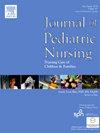获奖海报:期待意外:如何应急响应模拟准备门诊儿科诊所
IF 2.3
4区 医学
Q2 NURSING
Journal of Pediatric Nursing-Nursing Care of Children & Families
Pub Date : 2025-09-01
DOI:10.1016/j.pedn.2025.06.034
引用次数: 0
摘要
这项教育干预是针对在学术医疗中心的多学科儿科专科诊所工作的所有医疗从业人员。这家门诊诊所每年接待22个儿科专科,约有75,000名患者就诊,由10个不同的跨学科角色组成。这一差距是在2022年诊所发生紧急事件后的汇报中发现的。具体而言,工作人员报告在早期识别患者紧急情况、角色授权、沟通以及应急设备的使用和位置方面缺乏舒适感。在事件审查期间评估的需求是这项工作的催化剂。审查了门诊环境中应急准备最佳做法的证据。门诊儿科急诊被认为是低频率和高风险的事件,在这种情况下,儿科应急准备被发现是次优的(Abulebda等人,2021;Garrow等人,2020)。模拟是一种广泛使用的教育策略,但在门诊环境中并不常用(Carr和Gormley, 2022)。与该组织的模拟委员会和相关的护理学院合作,帮助设计了模拟策略。现场模拟程序侧重于患者紧急情况的前5 分钟,包括预简报、情景和汇报。这项干预旨在寻求在门诊环境中的模拟是否会改善儿科急诊期间工作人员的舒适度、技能发展和沟通。前后调查使用李克特量表和开放式问题来衡量结果。模拟后的调查显示信心(8 %),舒适(4 %)和知识(10 %)的增加。这项工作的意义表明,通过模拟和实时患者紧急情况,反复暴露于紧急事件,对工作人员的反应具有可观察到的积极影响。这提高了患者的安全性和治疗效果。虽然这项工作侧重于护理和支持人员,但未来的工作包括与更大范围的多学科医疗保健从业人员进一步合作。本文章由计算机程序翻译,如有差异,请以英文原文为准。
Winning Poster: Expect the unexpected: How emergency response simulation prepared an outpatient pediatric clinic
This educational intervention was intended for all healthcare practitioners who work in a multidisciplinary pediatric specialty clinic within an academic medical center. This outpatient clinic hosts 22 pediatric specialties with approximately 75,000 patient visits annually, staffed by 10 different interdisciplinary roles. The gap was identified during debriefing following an emergency event in the clinic in 2022. Specifically, staff reported lack of comfort in early recognition of patient emergencies, role delegation, communication, and use and location of emergency equipment. The needs assessed during this event review were the catalyst for this work. Evidence was reviewed on best practices for emergency preparedness in the outpatient setting. Pediatric emergencies in the outpatient setting have been considered low- frequency and high- stakes events and pediatric emergency preparedness in this setting has been found to be suboptimal (Abulebda et al., 2021; Garrow et al., 2020). Simulation is a widely used education strategy, yet not commonly used in the outpatient setting (Carr and Gormley, 2022). Collaboration with the organization's simulation committee and the associated College of Nursing helped to design the simulation strategy. The in- situ simulation program focused on the first 5 min of a patient emergency, including a prebrief, scenario, and debrief. This intervention aimed to seek whether simulation in the outpatient setting would improve staff comfort, skill development, and communication during pediatric emergencies. Pre and post surveys were used to measure outcomes using a Likert scale and open-ended questions. Post- simulation surveys showed increase in confidence (8 %), comfort (4 %), and knowledge (10 %). Implications for this work have demonstrated that repeated exposure to emergency events, through simulation and real- time patient emergencies, have observable positive effects on staff response. This has improved patient safety and outcomes in this setting. While this work focused on nursing and support staff, future work includes further collaboration with a greater scope of multi-disciplinary healthcare practitioners.
求助全文
通过发布文献求助,成功后即可免费获取论文全文。
去求助
来源期刊

Journal of Pediatric Nursing-Nursing Care of Children & Families
NURSING-PEDIATRICS
CiteScore
3.70
自引率
8.30%
发文量
291
审稿时长
65 days
期刊介绍:
Official Journal of the Society of Pediatric Nurses and the Pediatric Endocrinology Nursing Society (PENS)
The Journal of Pediatric Nursing: Nursing Care of Children and Families (JPN) is interested in publishing evidence-based practice, quality improvement, theory, and research papers on a variety of topics from US and international authors. JPN is the official journal of the Society of Pediatric Nurses and the Pediatric Endocrinology Nursing Society. Cecily L. Betz, PhD, RN, FAAN is the Founder and Editor in Chief.
Journal content covers the life span from birth to adolescence. Submissions should be pertinent to the nursing care needs of healthy and ill infants, children, and adolescents, addressing their biopsychosocial needs. JPN also features the following regular columns for which authors may submit brief papers: Hot Topics and Technology.
 求助内容:
求助内容: 应助结果提醒方式:
应助结果提醒方式:


